1570 A rare and necessary book
Test Piece
by Sheryda Warrener
Toronto: Coach House Books, 2022
$22.95 / 9781552454497
Reviewed by Michael Turner
*
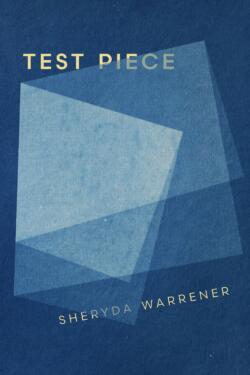 Back in the 1990s there existed a tension in Vancouver poetry between language-oriented writers, mostly those associated with the Kootenay School of Writing (KSW), and practitioners of spoken word, some of whom could be found sharing stages with members of the New Music scene. Looking back on this moment, it all seems rather quaint, a case of apples versus oranges: the language poets composed their works much like a painter or a photographer, which is to say two-dimensionally, while the more expressive spoken artists combined a range of social sculptural performance tendencies (rock pose, stand-up comedy, calisthenics and circus clowning), embodying their poetry as if they were the pen, the audience its paper. Of course there were writers who covered both ends of the spectrum — bill bissett being amongst the oldest, Adeena Karasick amongst the youngest.
Back in the 1990s there existed a tension in Vancouver poetry between language-oriented writers, mostly those associated with the Kootenay School of Writing (KSW), and practitioners of spoken word, some of whom could be found sharing stages with members of the New Music scene. Looking back on this moment, it all seems rather quaint, a case of apples versus oranges: the language poets composed their works much like a painter or a photographer, which is to say two-dimensionally, while the more expressive spoken artists combined a range of social sculptural performance tendencies (rock pose, stand-up comedy, calisthenics and circus clowning), embodying their poetry as if they were the pen, the audience its paper. Of course there were writers who covered both ends of the spectrum — bill bissett being amongst the oldest, Adeena Karasick amongst the youngest.

Of the two, it is fair to say that the spoken variant has endured, while central players in KSW, much like their forebears (L=A=N=G=U=A=G=E, TISH, New American Poetry), accepted university positions, published less and, in some instances, adopted conjunctions that re-oriented their often impressive arrays of dependent clauses into grammatically correct, line-broken sentences. But within this 1990s language-orientation — this inherently critical project that saw the standardization of language and its rhetorics as complicit in the structure and function of political-economic subjugation — there was an attempt at a “new lyric”, championed locally by Susan Clark, a KSW poet who, in the 1980s and 90s, published and edited a journal called Raddle Moon. That Clark was not included in Writing Class: The Kootenay School of Writing Anthology (1999) spoke to an end-stage KSW editorial cell that privileged class over affect, an exclusion that ironically coincided with KSW’s most class-conscious poet, Deanna Ferguson, comping on another Marx (Groucho) by refusing inclusion in any anthology that would have her as a contributor.
A few years ago, while re-organizing my bookshelves to support not the books I need to be seen to be reading but those I have read and return to, I came upon my collection of Raddle Moons and, after flipping through them, flirted with the conclusion that the writing they contained is closer to what could have evolved from KSW if it allowed itself to continue organically (dialectically?), attracting newer and younger members from communities it was, for various reasons, never able to connect with. It has become something of a parlour game I play with those who remember Vancouver’s 1990s poetry scene, that when we come upon the work of an emerging Vancouver writer we ask whether KSW would have supported them or, conversely, would they have supported KSW. Elee Kraljii Gardiner has been one of those emerging writers, as has Mercedes Eng, Ray Hsu, Danielle LaFrance, Taryn Hubbard and Juliane Okot Bitek, to name a few. A more recent writer is Sheryda Warrener.
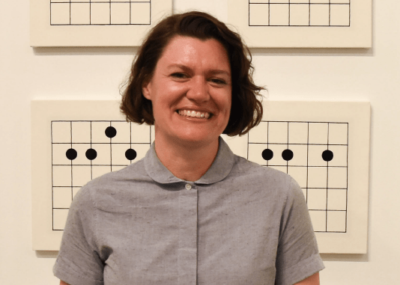
Warrener is a writer whose name I have seen around more than a few times over the past couple of years, primarily through her association with Artspeak, an artist-run centre that emerged from KSW in the mid-1980s and whose programme is partial to visual artists who work with text. That Warrener has been facilitating writing workshops there suggests she has an interest in contemporary visual art and is likely drawing on visual artists who want to pursue what it is to be writing. But apart from bookstore flip-throughs of her earlier books (Hard Feelings, 2010 and Floating is Everything, 2015), I can’t say I have sat down with Warrener’s work and given it the reading it deserves. As to why I am doing this now has as much to do with Warrener’s work with Artspeak as it does with the BC Review offering her most recent book, Test Piece (2022), for review. Service has always been important to me (I was an Artspeak board member in the late-1990s), and I am happy to see that, given our relational turn, service is now more than ever a valued part of the love we make (née artistic practice).
Test Piece is a relatively short book (80 pages) crafted in dimensions (5” x 8”) that equal Maggie Nelson’s Bluets (2009) and is 3/8” taller than my Penguin edition of Annie Truitt’s Daybook: the Journal of an Artist (1982), which Warrener quotes from for the first of the book’s two epigrams — the other coming from Anni Albers’s “Material as Metaphor” (1982), which was initially shared not as a printed text but as a statement made at “The Art/Craft Connection: Grass Roots or Glass Houses” panel at the College Art Association’s 1982 annual meeting in New York City. Apart from Test Piece’s concluding five pages of “Notes”, “Acknowledgements” and “About the Author”, the book is made up of five poems with four intervening photo-text palimpsests, with the first poem, “Crushed Velvet”, measuring a page-and-one-sixth, and the other four what we might think of less precisely as long poems. That “Crushed Velvet” is the book’s lone “short poem” only adds to its significance. Are we to look at it as an introduction to the book’s formal motifs or an occasion in which to establish mood and tone?
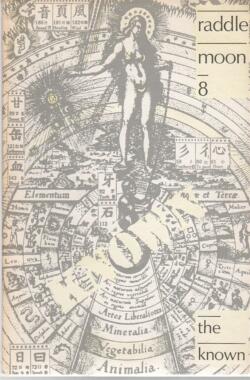
Narratively-speaking, “Crushed Velvet” is a public encounter between the poet and pedestrians, first; a negotiation with the private world of goods and services, second. If we consider Truitt’s epigram, Warrener’s approaching poet is Truitt’s inscribing “line” drawn “with infinite tenderness,” and the poet’s decision to “swerve into the path” (p. 11) of oncoming yoga enthusiasts (“On the off-chance of catching a wayward spark”) is what Truitt implies when she speaks of that line as “the experience of a body” — both the poet’s body and those collective bodies with which she puts herself in palimpsestic relation. “Lacking fluency, I fail to register,” writes the poet, and we have not only our first moment of difference (Truitt’s “a separate unknowable experience inside the line, space outside”) but the scales with which the poet’s subsequent experiences are measured — not through a snub from those yoga enthusiasts but a “[l]acking … fail” on the part of the humble, if not self-reflexive, poet (“Desire a material time turns outside in”). “This is not the first time this trend has cycled/ through in my lifetime,” writes the poet shortly before entering that private world of goods and services.
From her path the poet begins to “drift in and out of propped shop doors,” where she observes the protocols that attend women’s dressing rooms (“… the fine mesh bag/ over my face to safeguard the garment from the/ makeup I’m not wearing”) and, in her compliance, the dressing room mirror provides a finely observed picture of the poet and the white wall behind her: “… a sapling wrapped in burlap against/ a wintry backdrop.” And then this unexpected and gorgeously rendered return/reveal: “… when I remove the gauzey layer/ I’ve doubled in age and it’s spring again.” A final stop takes place at a makeup counter, where she enters into a skin care ritual. For this we turn the page:
Days touchlessness reversed.
After rinsing me under lukewarm water, she makes a tidy
package with the towel, unwraps the gift of my own hand. (p. 12)
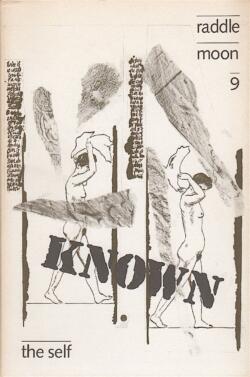
“Crushed Velvet” is both an introduction to the book’s formal motifs and an occasion in which to establish mood and tone. To suggest that it can only be one or the other is disingenuous, a false dichotomy. However, back in the 1990s, the formal versus expressive argument was a thing, and indeed it persisted as a thing as late as the early 2010s when Craig Dworkin and Kenny Goldsmith released their polemical Against Expression: An Anthology of Conceptual Writing (2011), a last ditch effort to assert a literary avant-garde that shopped in (or shoplifted from) modern visual art history. But if I am being disingenuous, let me invert that and suggest something presumptive concerning the formal structure of “Crushed Velvet”, whose opening two lines are, to my mind, deliberately ungainly: “Three women come toward me now up the city/ block in matching citrus tones, crushed velvet.” An instance of a subject’s observation as representative of a subject made to feel ungainly by a trio of smooth-moving yoga enthusiasts? To start a book like this is not only brave but a further instance (the first instance) of a poet working with the materiality of form (the second half of Albers’s epigram reads: “To make it visible and tangible, we need light and material, any material”) to induce and set, concretely, the book’s mood and tone.
Of the book’s remaining poems — its long poems, each of them lyrically exquisite yet variable in their densities — all are set in places familiar to us, or familiar to those who can imagine the life of a writer interested in visual art (“A Fixed Point”), who travels by commuter train to a teaching job (“The Blue Filter”), has a family (“On a Clear Day”) and is a resident at an art centre (“Test Piece”). As in “Crushed Velvet”, the poet continues her slow situational strobe between inside and outside, a condition that produces the kinds of ambiguities insights are made from. And these are valuable insights, the kinds that come to us — and are shared — honestly; not through performative self-effacements, but through emotional truths once expected of Wordsworthian tranquility, only today these truths are more often the result of anxiety, a symptom of our increasingly fractious world.
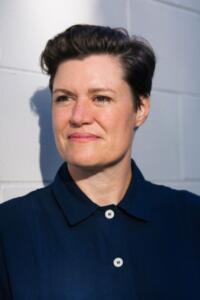
It has been a habit of mine when reviewing poetry books to give greater attention to a book’s opening poem and present my appraisal through its lens. This might appear a lazy strategy to some, that the reviewer as critic should elaborate on the source of the book’s title (in this case, a formal “process” sculpture by the late Eva Hesse) and focus on the poems’ “high” and “low” notes. Yet as much as Warrener seems to make something of her oppositions (reflections, reversals, inversions) she is, as most of us are, grounded in the endotic. And while there are ludic moments, this book is neither the musings of a look-at-me performative self, nor a record of a selfless, placeless proprioceptive force, but a guidebook, like Truitt’s Daybook, or better, May Sarton’s Journal of a Solitude (1973), if the poet wasn’t so decidedly amidst a world of family, friends, shop clerks and colleagues.
Test Piece is a rare and necessary poetry book at time when too many poetry books mistake attitude for ideas, opportunism for politics. It is thus far the closest poetry book I have read to what I imagined all those years ago when looking through my Raddle Moons, and a book I intend to keep with them.
*
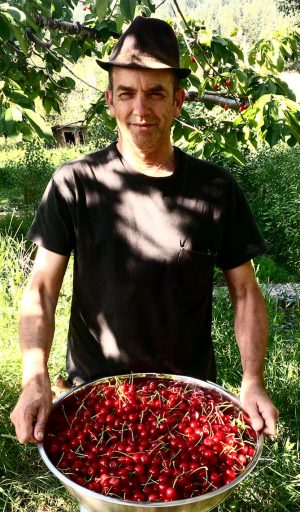
Michael Turner is a writer of variegated ancestry (Scottish/ German/ Irish, mat.; English/ Japanese/ Russian, pat.) born, raised and living on unceded Coast Salish territory. He works in narrative and lyric forms, both singularly, as a writer of fiction (American Whiskey Bar, The Pornographer’s Poem, 8×10), poetry (Hard Core Logo, Kingsway, 9×11), criticism and music, and collaboratively, with artists such as Stan Douglas (screenplays), Geoffrey Farmer (public art installations) and Fishbone, Dream Warriors, Kinnie Starr and Andrea Young (songs). His work has been described as intertextual, with an emphasis on “a detailed and purposeful examination of ordinary things” (Wikipedia). He holds a BA (Anthropology) from UVic and an MFA (Interdisciplinary Studies) from UBC Okanagan. Currently he is an Adjunct Professor in the Faculty of Liberal Arts and Sciences and School of Interdisciplinary Studies and Graduate Studies, Ontario College of Art & Design University and a workshop leader at Mobil Art School, Vancouver. Editor’s note: Michael Turner has recently reviewed books by Marius Kociejowski, Larissa Lai, Emma Cleary et al., Tara Borin, Taryn Hubbard, and Jen Sookfong Lee for The British Columbia Review.
*
The British Columbia Review
Publisher and Editor: Richard Mackie
Formerly The Ormsby Review, The British Columbia Review is an on-line journal service for BC writers and readers. The Advisory Board consists of Jean Barman, Wade Davis, Robin Fisher, Cole Harris, Hugh Johnston, Kathy Mezei, Patricia Roy, Maria Tippett, and Graeme Wynn. Provincial Government Patron (since September 2018): Creative BC. Honorary Patron: Yosef Wosk. Scholarly Patron: SFU Graduate Liberal Studies.
“Only connect.” – E.M. Forster
3 comments on “1570 A rare and necessary book”